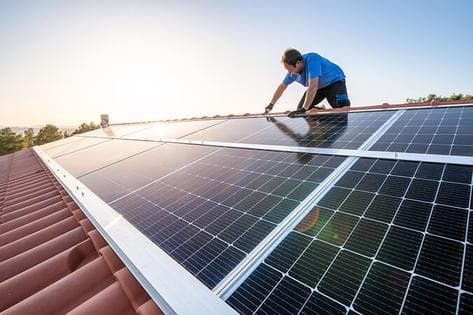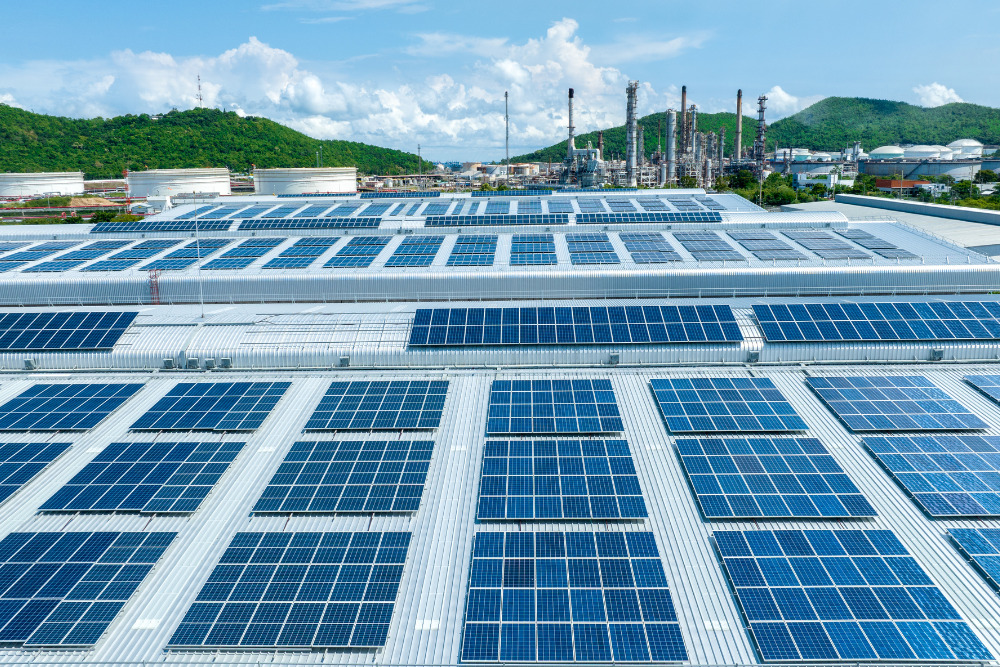How Solar Companies In Virginia can Save You Time, Stress, and Money.
How Solar Companies In Virginia can Save You Time, Stress, and Money.
Blog Article
Solar Power Installation Virginia: Lumina Solar Focuses On Supplying Advanced Photovoltaic Solutions For Houses And Businesses
History and Establishing
Have you ever wondered how a photovoltaic panel business springs from a simple spark of motivation into a powerhouse of renewable resource? It frequently begins with a vision-- one fueled by a mix of innovation, decision, and a pinch of serendipity. The journey of many solar companies mirrors the development of the innovation itself: from large, inefficient panels to streamlined, high-efficiency marvels harnessing the sun's bounty.
The Early Days
In the late 20th century, when solar power was still a niche principle, leaders planted seeds for what would end up being a worldwide motion. Think of a little workshop filled with curious engineers, relentlessly explore photovoltaic cells. Their enthusiasm was palpable, typically driven by a desire to fight climate change and reduce get more info reliance on fossil fuels.
One such anecdote has to do with a founder who, motivated by a camping journey, realized that even in remote locations, the sun might power important devices. This basic observation sparked a business's mission to democratize access to clean energy.
Establishing Principles

- Development: Continually pushing the borders of solar technology to improve efficiency and toughness.
- Sustainability: Committing to environment-friendly manufacturing and decreasing carbon footprints.
- Ease of access: Making renewable energy services economical and practical for everyday users.
Turning points in Development
| Year | Key Occasion |
|---|---|
| 1985 | Company founded in a small garage, concentrating on research and advancement. |
| 1995 | First business photovoltaic panel item introduced, gaining regional attention. |
| 2005 | Expanded to international markets, accepting global renewable resource objectives. |
| 2015 | Presented advanced photovoltaic panel technology with boosted energy conversion. |
Isn't it interesting how these incremental steps, typically ignored, form the energy landscape today? The photovoltaic panel business story is not just about technology; it's about a ruthless mission for a brighter, cleaner future.

Innovations in Photovoltaic Panel Technologies
Ever seen how some photovoltaic panels shine brighter and last longer? It's not magic; it's the science of photovoltaic performance. Modern photovoltaic panel companies invest heavily in technologies like bifacial cells, which capture sunlight from both sides, boosting energy harvest without broadening roofing area. Have you ever wondered why some panels perform much better on cloudy days? That is because of advances in thin-film solar technology, which thrives under diffused light conditions.
Item Variations Tailored to Unique Needs
One size never fits all. Photovoltaic panel providers now use:
- Monocrystalline panels for optimum performance and sleek aesthetics, perfect for space-constrained rooftops.
- Polycrystalline panels, which provide an economical option without sacrificing too much output.
- Building-integrated photovoltaics (BIPV), merging solar tech seamlessly into architectural components like windows and facades.
Choosing the best product isn't almost upfront expense; it has to do with matching your environment, energy objectives, and long-lasting cost savings. For example, homes shaded by trees need panels that master low-light situations, something many neglect until energy costs climb all of a sudden.
Technical Tips for Optimum Choice
- Examine the temperature coefficient-- lower worths suggest panels lose less effectiveness on hot days.
- Search for panels with boosted anti-reflective coatings to maximize light absorption.
- Consider the panel's service warranty not simply for flaws, but for guaranteed power output over decades.
- Do not undervalue the significance of the inverter innovation combined with the panels; it can make or break your system's performance.
Beyond Panels: Emerging Patterns
Imagine photovoltaic panels that adjust their angle instantly to go after the sun-- tracking systems are becoming more accessible, increasing yield considerably. Or solar tiles that mix undetectably into your roofline, transforming your home into a quiet, self-dependent power generator. These developments are reshaping what a photovoltaic panel company provides-- not just products, but incorporated energy services.
Market Existence and Global Operations
Ever wonder why some photovoltaic panel business appear to sprout up in every corner of the globe while others barely make a ripple? The difference lies not just in technology but in mastering the art of browsing varied markets. Expanding internationally is like planting seeds in different climates-- you must understand each environment's special conditions to flourish.
Take, for circumstances, the complex dance of logistics and supply chain management. Delivering panels midway across the world isn't just about range; it has to do with timing, customs, tariffs, and adjusting to local demand changes. A business with robust global operations expects these variables, making sure panels show up on schedule without inflating expenses. This foresight is no small accomplishment and often separates market leaders from followers.
Secret Methods for Expanding Market Presence
- Localized manufacturing: Establishing production hubs near target markets minimizes shipping hold-ups and import complexities.
- Strategic collaborations: Teaming up with local companies speeds up market penetration and develops trust.
- Adaptive item design: Customizing photovoltaic panel tech to weather, sun intensity, and facilities subtleties enhances performance and acceptance.
What about the human element? Photovoltaic panel companies running globally need to fix up cultural differences and regulatory subtleties without losing sight of their core objective. What works in a sun-drenched desert might fail in a damp coastal region. Sometimes, the most innovative solution is just listening-- absorbing regional insights to improve technology and approach.
Experts frequently encourage a phased rollout instead of a shotgun expansion. Why run the risk of overextension when determined development develops sustainable momentum? Scaling wisely indicates balancing ambition with functional strength - Commercial Solar Panels Virginia. In the race for sustainable energy dominance, patience can be as important as speed.
Ecological Impact and Sustainability Practices
When solar panels first emerged, lots of presumed they carried no environmental luggage. The reality is more nuanced. The production of solar batteries involves rare earth metals and energy-intensive procedures, which can leave a sizable carbon footprint before the panels even reach roofs. Yet, the real environmental cost depends greatly on the sustainability practices used by the solar panel company throughout the lifecycle of their products.
How often do we stop briefly to consider what takes place to solar panels at the end of their beneficial life? Unlike batteries or electronic devices, solar panels can last 25-30 years, but disposal and recycling pathways stay underdeveloped in many areas. A company committed to lowering environmental harm will have a robust plan for recycling photovoltaic products, salvaging important silicon, glass, and metals to prevent land fill build-up.
Key Sustainability Techniques
- Using low-impact manufacturing techniques that lessen water and energy usage.
- Executing closed-loop systems to recycle production waste back into brand-new panels.
- Taking part in transparent supply chain audits to ensure ethical sourcing of raw products.
- Creating panels for easier disassembly to help future recycling efforts.
It deserves keeping in mind that some solar companies have actually originated innovative techniques, such as incorporating eco-friendly elements or utilizing less toxic chemicals during fabrication. This not only lowers environmental stress but likewise sets a precedent for the market. The concern stays: can the solar industry genuinely pivot towards a circular economy model without sacrificing efficiency or affordability?
Professional Tips for Evaluating Sustainability
- Inquire about the business's dedication to carbon-neutral production and whether they balance out emissions.
- Examine if they partner with licensed recycling facilities devoted to photovoltaic panel waste.
- Look for openness reports detailing ecological effects and sustainability objectives.
- Think about the longevity and warranty of panels as an indirect step of resource effectiveness.
In the end, choosing for solar power needs to mean more than just slashing electrical power costs; it's about nurturing a future where energy is harvested properly and waste is thoughtfully handled. Photovoltaic panel companies that welcome this viewpoint not just light up homes however also cast a brighter light on sustainable development.
Report this page